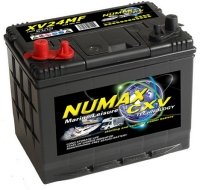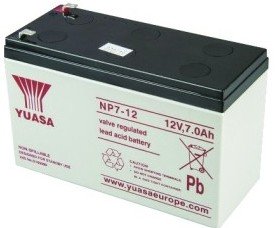Many thanks to Ricky M6DII for suggesting this short guide on powering your amateur radio equipment on a field event. Comments and additions welcome…
Portable Power
If you’re looking to do any radio work “in the field”, then you’ll need to thing about your radio, antennas and how you’re going to power your kit. In the field, without mains power, your choices are essentially batteries, or a generator. On this page, we’ll be looking at battery power.
What to look for
The traditional 12V Leisure Battery seems to be a popular choice, as they are fairly easy to come by. These are ‘deep-cycle’ batteries capable of being charged and discharged hundreds or thousands of times, and generally suited for occasional use. They’re often used by campers and carannavers.
Leisure Batteries
The capacity of leisure batteries is measured in Amp/Hours, and it’s a case of calculating current usage to define how long your battery will last.
If you check in your radio’s manual, there’s normally something in the specifications section to outline how thirsty your rig is. As an example, my Icom IC-718 states the following:
- Receive / Standby: 1.3A
- Receive / Max Audio: 2.0A
- Transmit / Max Power (100 watts): 20A

My choice of Leisure battery for amateur radio operation was a Numax XV24MF battery for just under £60 from a local battery shop.This is rated as an 86 amp/hour battery.
So, if I were to assume that in the course of an hour, I’d transmit at 50 watts for 20 minutes an hour and receive for 40 minutes an hour, I’d be drawing an average of 7 amps over an hour. An 86 amp/ hour battery would therefore give me a little over 12 hours. If you’re powering other kit, such as an ATU or a laptop charger, factor in the current when doing the maths.
Leisure batteries are similar to the size of car batteries, and pretty heavy.Look for a sealed lead acid battery, and handle with care.
Bear in mind that you will also need a mains charger to recharge the battery. These are in the £15 to £25 price range and also sold from battery suppliers.
For extended field trips, such as the Thames ARG Crowsheath field days, many of the operators made use of large solar panels to recharge their leisure batteries “in the field”, as access to mains charging was not an option.
Smaller Portable Power

Obviously, lugging around a car battery isn’t always practical, and if you’re planning a shorter period of operation, or low-power work, then making use of a SLAB (Sealed Lead Acid Battery) may be more suited to your portable kit.
These are about the size and weight of a small brick, and the common 12V ones are rated to around 7 amp/hours – ideal for a few hours of portable use at low-to-modest power.
See: Sealed Lead Acid Bateries at Maplin.
Don’t forget you’ll also need a mains charger to charge the battery, and a pair of spade connectors for the lead from the battery to your radio.
Battery care
Care has to be taken with batteries – risk include short circuits or damage to the casing resulting in leaks of corrosive battery acid.
Also, read the instructions on how to care for your battery, to get the best performance and life from your battery.
It’s worth considering a portable case for your battery, for easy carrying and storage. Some come with built-in battery meters to check the remaining charge on the battery.
This is only a brief guide, and for more on leisure batteries, see this guide: Camping & Caravanning Club: Leisure Batteries
Got any suggestions or battery advice? Please add a note below.


Help
Can you tel me how to update my ham licensee with ofcom, I have spent 4hrs tonight and steel do not no how to do it,I can not see were you log in now help Pete?
http://sxham.uk/licenceportal
It is nigh on impossible to validate our licences now. It seems ofcom have removed the option on screen. I have sent them an email asking how to validate, and will post the reply here when I get it.
Change or add a phone number and save. You will then see it changes the date of last validation.
I have a Numax XDC25MF which is a 95ah battery, and what is used for POTA activations, running around the dame watts p/h Rx/Tx, great battery but at 22.5kg it is heavy when rambling.
I also have 3x Shan Shui 6-DW-12 which are just 12ah, but 2x are suffice for QRP Op’s, weight is around 6kg a piece.
The Ultramax 36hole lithium-ion 12v 22ah and weighing in at 2.9kg has got to be my goto radio for the bug out bag/field trip.
What about Calcium Leisure batteries, I remember reading somewhere about them having lower operational voltage, than what we need at 13.8VDC to meet input power spec of ham radio equipment.